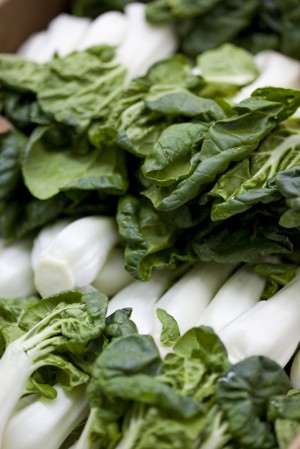Perspective: Oran Hesterman on Fair Food
Author: WorldLink Staff
Source: Nourish
Fair food is good for people and the earth. Oran Hesterman, author of the new book Fair Food and founder of the Fair Food Network, discusses what communities are doing to create a more equitable food system.

What is “fair food”? What are the principles of a fair food system?
Oran Hesterman: The idea behind fair food is quite simple: Everyone should have the right to healthy food, just as they should have the right to a good education for their children and access to adequate healthcare. Fair food is food grown in a way that is environmentally friendly, that is healthy, and that provides for the economic wellbeing of everybody in the system, from production to processing to distribution. A fair food system is based on the principles of equity, diversity, ecological integrity, and economic viability.
What are some inspiring examples of these principles in action?
Oran Hesterman: Fair Food Network’s Double Up Food Bucks (DUFB) program in Michigan has proved to be an outstanding model program that provides monetary incentives to low-income shoppers, encouraging them to spend their federal food assistance dollars (also known as food stamps or SNAP benefits) at farmer’s markets. When customers use their SNAP benefits at participating farmers markets, they receive an equal amount of tokens that can be used at the markets to purchase fresh, locally grown fruits and vegetables. The program makes healthy food more accessible to low-income urban families while creating new sales opportunities for farmers, thereby supporting the local economy.
Organizations such as Red Tomato in Boston, Farm Fresh Rhode Island, and Detroit Eastern Market are working as food hubs to aggregate, market, and distribute locally produced food. Their efforts free up time, labor, and cost for the farmers, while streamlining the distribution of local food to consumers and institutions such as schools, restaurants, hospitals, and even grocery stores.

What role do local farms play in a fair food system?
Oran Hesterman: When you buy a non-local head of lettuce or piece of fruit in a national chain supermarket, the majority of that dollar goes to the corporation that owns the store. When you buy these items locally at a farmers market, the farmer takes home 100 percent of that dollar. Of course, farmers have expenses, too, but farmers, like other local independent business owners, tend to spend more on local employees, who in turn spend their money with area merchants, who in turn tend to provide greater support for local organizations and activities.
One of the most effective regional policies to protect farmland is called Purchase of Development Rights (PDR). Local tax authorities can raise funds from current property taxes to purchase the development rights on farmland. Oftentimes these funds can be matched by state or federal sources. Once development rights are purchased, the farmland can never be used for development purposes and remains in farming in perpetuity. In my own hometown of Ann Arbor, Michigan, we are using farmland that has been preserved through PDR for new farmers to establish farming operations. Even though residents of the city are supporting the PDR, the farmland being preserved is actually in the rural areas surrounding the city. It’s a perfect model for any region.
How can education help catalyze a fair food revolution?
Oran Hesterman: Education plays a vital role in helping to catalyze change in the food system. Whether we think of education as increasing our own knowledge of how to participate in institutional or policy change, or in the more formal sense of schools and universities, there are many steps that we can take toward change.
In addition to Nourish, some examples of programs that are catalyzing the fair food revolution in school settings are The Edible Schoolyard and Real Food Challenge. The Edible Schoolyard consists of a one-acre organic garden and kitchen classroom for urban public middle school students, where students participate in all aspects of growing, harvesting, and preparing nutritious, seasonal produce. The Real Food Challenge works to increase the procurement of real food on college and university campuses, with the national goal of 20 percent real food by 2020. The challenge consists of both a campaign and an online network, and includes support, training, resources, and materials for students and their allies to make connections, learn from one another, and grow the movement.
What collective actions will make the biggest difference in transforming our food system?
Oran Hesterman: Collective action needs to happen in our communities by means of buying clubs, community gardens, farmers markets, and CSAs. But it goes further than that: Where are schools, universities, corporations, hospitals, government offices, and correctional facilities buying their food? How are federal food assistance benefits being spent? Citizen engagement in these questions will make the largest difference at the state, regional, and national level.
The original post can be found at Nourish.







